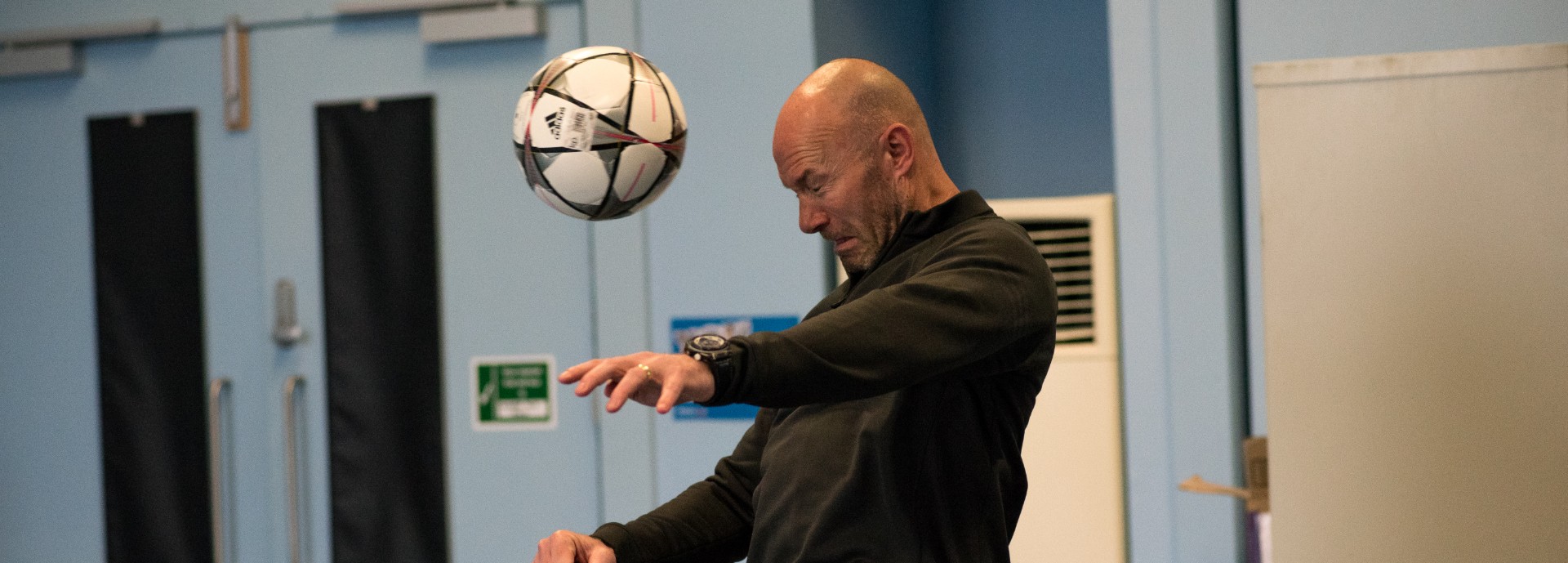Experts from the University of Stirling have welcomed news that heading footballs will no longer form part of training sessions for under-11s in England, Scotland and Northern Ireland.
The announcement follows world-leading research from the University of Stirling that found “small but significant changes” in brain function in footballers, immediately after routine heading practice.
Stirling scientists who led the work – cognitive neuroscientist Dr Magdalena Ietswaart and Dr Angus Hunter, Reader in Exercise Physiology – featured in the BBC One documentary, ‘Alan Shearer: Dementia, Football and Me’, screened in November 2017.
In a joint announcement from the Football Association (FA), the Scottish FA and the Irish FA, the organisations said there would be “no heading in training in the foundation phase” – covering primary school children, or under-11 teams and below. In addition, they introduced new rules that would keep headers “a low priority” for age ranges up until 18.
Reacting to the policy change, Dr Ietswaart said: “Our research here at the University of Stirling was the first to demonstrate directly that football heading disrupts the brain. This work triggered a global debate around the safety of heading – and the first calls to restrict heading in children’s training sessions followed publication of our initial study in 2016.

Dr Magdalena Ietswaart, of the University of Stirling, welcomed the new announcement.
“While this latest announcement is a sensible move and undoubtedly a step forward in attempting to protect young footballers from the risks associated with heading, it remains unknown how much sport-related head impact is safe. There is also a lack of scientific evidence showing that a limited amount of heading is safe, that deflating ball pressure reduces risk, or that heading the ball with a specific technique reduces the burden of heading.
“I must stress: the risk has not yet been fully addressed. The brain develops up until the age of 23, therefore, if heading is to be avoided during the development phase, we must ask: why should heading frequency increase after the age of 11?
“Further research is required in this area to fully understand the risks posed by head impact in sport – and, consequently, potential solutions to the problem.”
The 2016 study from Stirling – published in EBioMedicine – identified “small but significant changes” in brain function immediately after routine heading practice. It was the first study to detect direct changes in the brain after players were exposed to everyday head impacts, as opposed to clinical brain injuries such as concussion.
Football players headed a ball 20 times, fired from a machine designed to simulate the pace and power of a corner kick. Before and after the heading sessions, scientists tested players’ brain function and memory.
Increased inhibition in the brain was detected after just a single session of heading. Memory test performance was also reduced by between 41 and 67 percent, with effects normalising within 24 hours.
The BBC documentary Alan Shearer: Dementia, Football and Me featured the footballer participating in the research at Stirling.
Research, from Dr Thomas Di Virgilio – part of the original research team, has since found that the brain changes observed following heading in football are similar to those following routine sparring in boxing.

